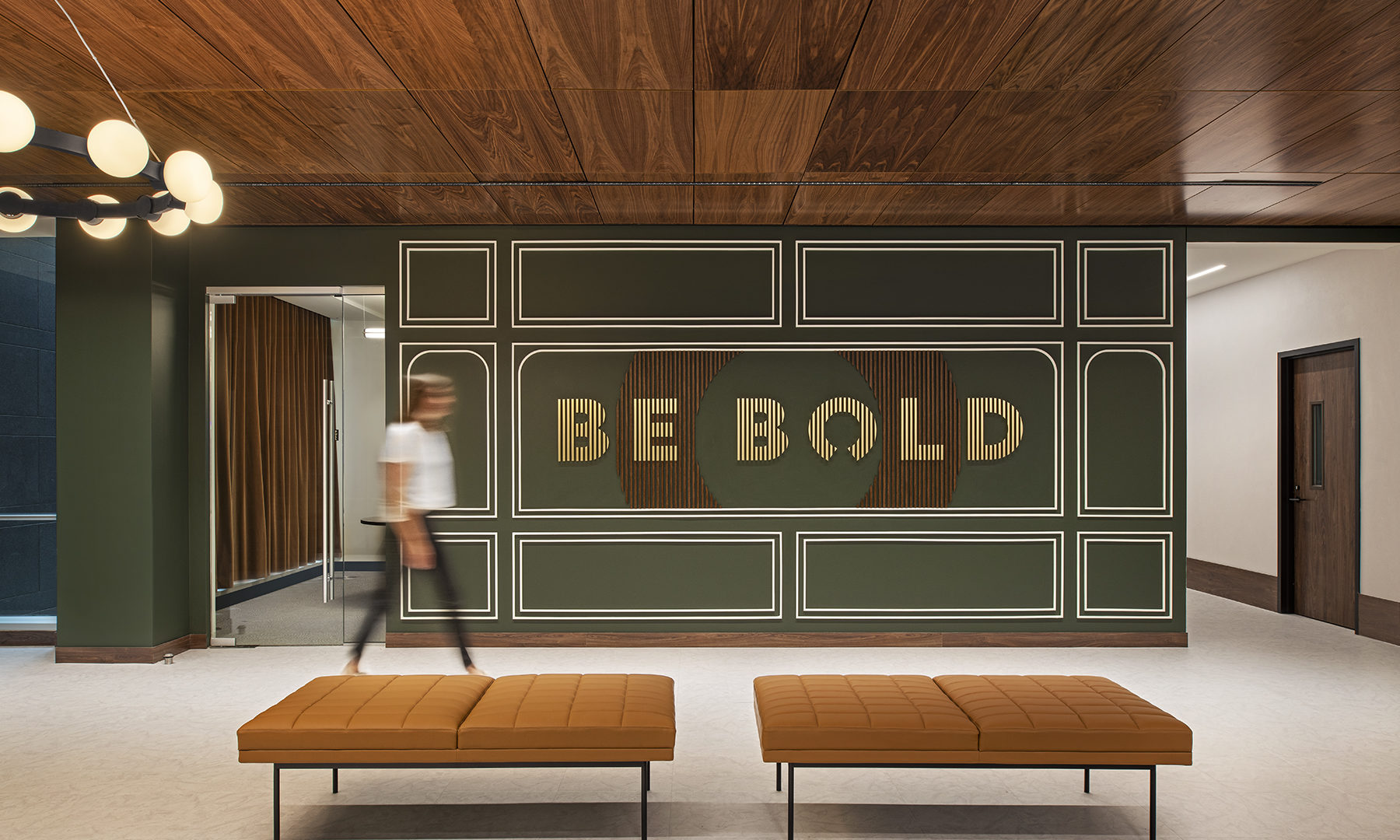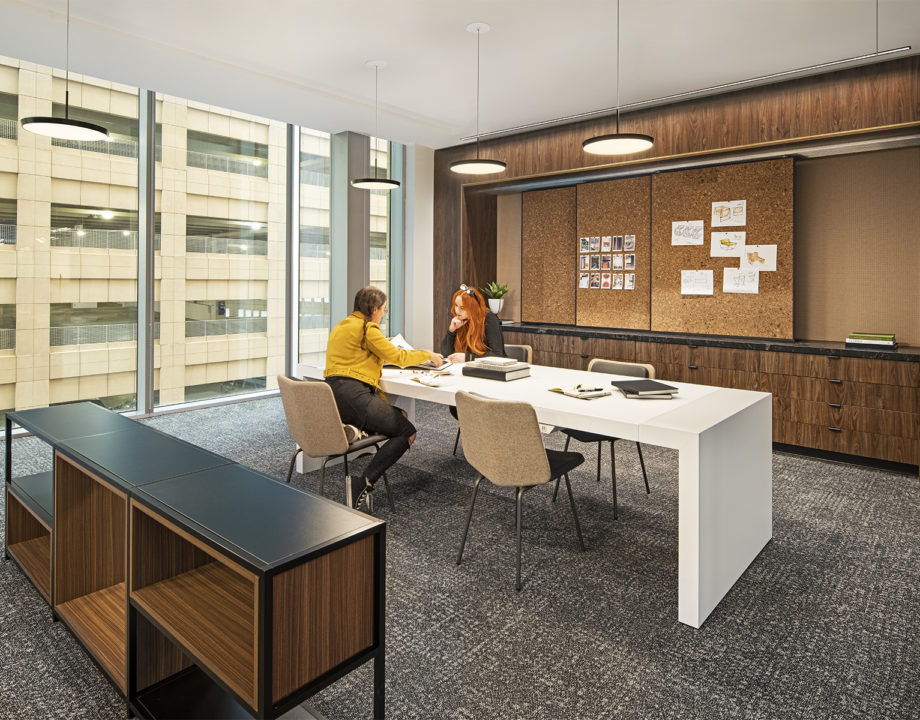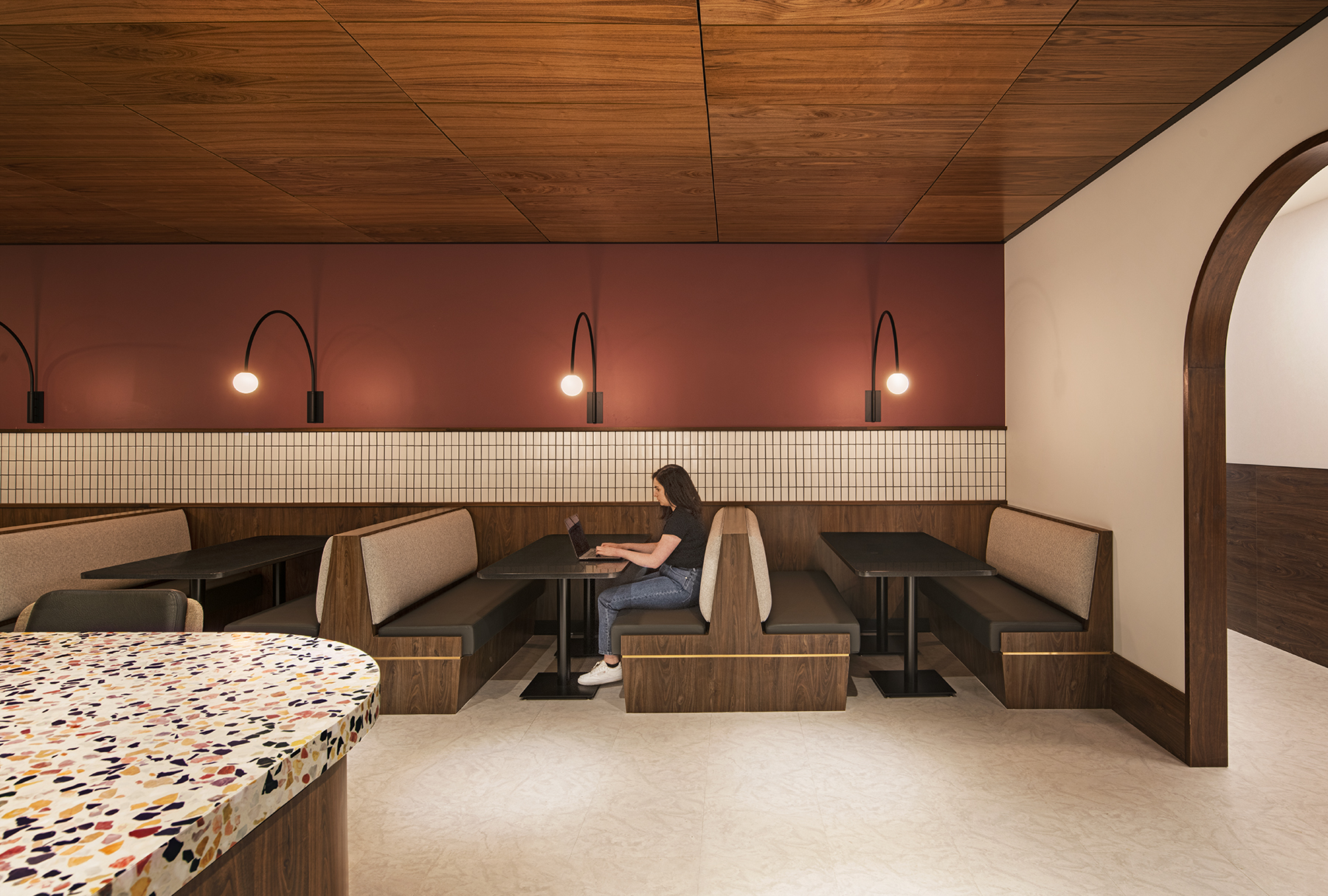Return To Work: An Interview With Bloomberg
 Read Below
Read Below
 Read Below
Read Below
Return To Work: An Interview With Bloomberg
In 2020, the traditional office structure was flipped on it’s head. Work from home dominated most industries and changed our cultural mindset of what was possible to achieve without physical presence. Working from a home office came with it’s own set of benefits and drawbacks. There is a certain comfort in being able to work alongside a furry friend or be able to cook your lunch for the day, but studies have shown that people prefer a hybrid work model to provide balance. We are at a stage where we need to re-evaluate our traditional notions of workspace design to return to office in a productive, intentional way. What does it take to create a space team members are excited to return to? Last May, our President Jennifer Janus spoke with Bloomberg about the nuances of return to office.
Before the pandemic, traditional office space took on a very utilitarian approach to design. “It used to be the goal of office space was ‘how many people can I get into a square footage of space?’”, notes Jennifer. Not only did this office design strip away individuality, it also created a hostile hierarchy with office real estate. Only executives and managers could have access to private spaces and windowed suites. This stifles collaboration, innovation, and generally demoralizes team members. Sitting in rush-hour traffic every morning becomes even more unbearable when you know the only thing greeting you at work is the flickering fluorescent light above your desk. If return to office is going to be effective and enjoyable, it is necessary to remove the physical and sociological barriers of traditional office design.
After examining the typical image of a workday for most Americans, it makes perfect sense why work from home jobs became so coveted over the last three years. Suddenly, everything slowed down. There was no more rush out the door to miss the traffic, no grumbling stomachs before your designated lunchtime, and for many with neurodiversity there was no more need to mask themselves to complete their work. You were able to create a safe space within your home to do your job. You could go for a walk when you needed to decompress. Your pet could be curled up next to you, supporting you during the big pitch to a client.

While work from home came with so many benefits, there was an undeniable feeling of isolation for many. Every meeting had to have a formal pre-planned Zoom invite. To message a coworker just to say hi and check in felt uncomfortable. A certain level of spontaneity was removed from how we worked together. In addition, the unfortunate reality is not everyone’s home can be a safe space. A balance needed to be struck between work from home and return to office. The biggest takeaway from our research is the sense of team members desiring more control over their environment and the way they work.

"Research has proven that our physical environment impacts the way we feel and how productive we are... Offices have to be a hospitality space where people want to come to"
What does it mean for team members to have control over the return to office? Jennifer notes “ Our physical environment impacts the way we feel and how productive we are”. Hybrid work models addressed part of this element, however there was still a flickering, fluorescent elephant in the room. The office hasn’t changed. In fact, it had become less bearable for some with how stark of a contrast their work from home set up became versus their “in person” workspace. The office needs to be a space people want to come to and enjoy collaborating in. The physical barriers between team members needs to be removed. Spaces need to be designed with all work styles in mind and truly accommodate those with sensory issues and other neurodiversity. For return to office to work, office design needs to shift to a hospitality focus and provide team members what they would not be able to get working entirely remote.
No two individuals are completely identical, so why were traditional offices designed with rows of the same cubicle over and over? How can we aim to be more accommodating of not only different work styles, but also neurodiversity in the workspace? Pophouse’s design philosophy is human-centric, and has been shown through projects like Phil the Lounge Chair and Rocket Mortgage Marketing. Jennifer Janus took Bloomberg on a tour through Rocket Mortgage Marketing to show just how many work styles can be incorporated into an office. From sound-proofed individual work pods for those who struggle with overstimulation, to meeting rooms that only take a push of a button to access, to large convivial spaces that encourage socialization and collaboration, there is something for everyone.

Future office spaces will not have one specific look or philosophy. Office design trends will be based on research and include a variety of spaces to accommodate all work styles. Team members will want to return to office and collaborate because their space was designed with human-nature at the forefront. To learn more about our research into our shifting attitudes towards return to work, check out our report, Work Uninterrupted.
Next Story
